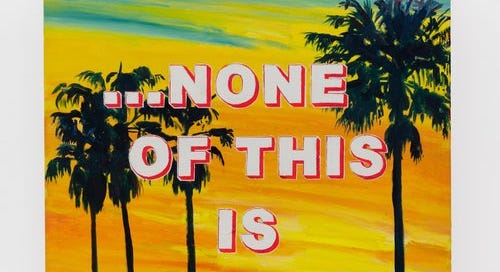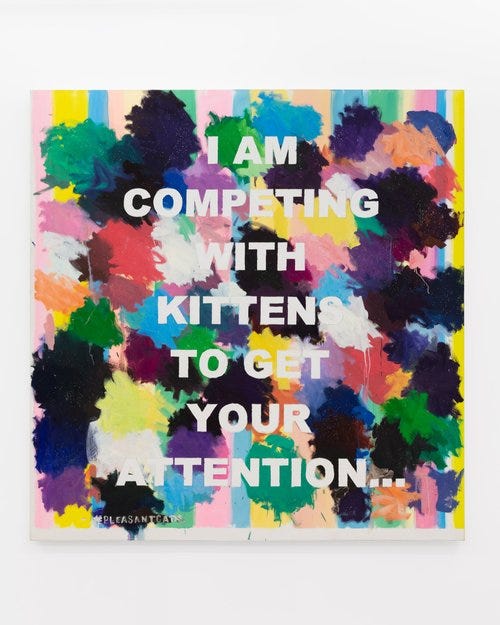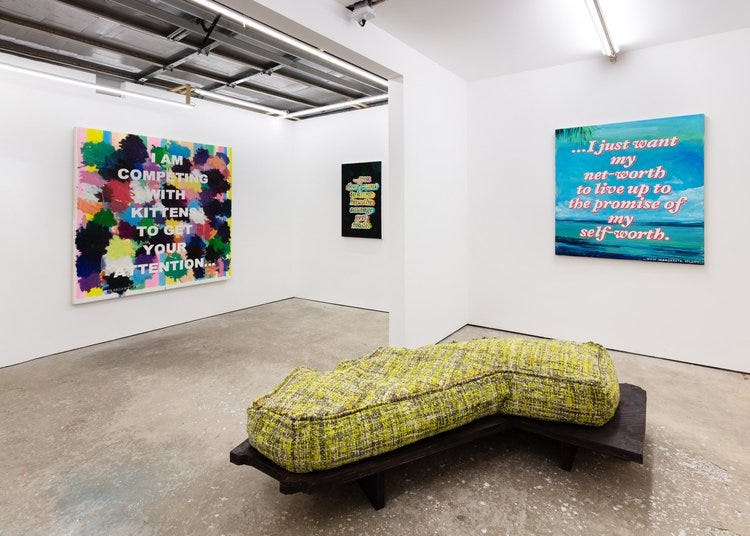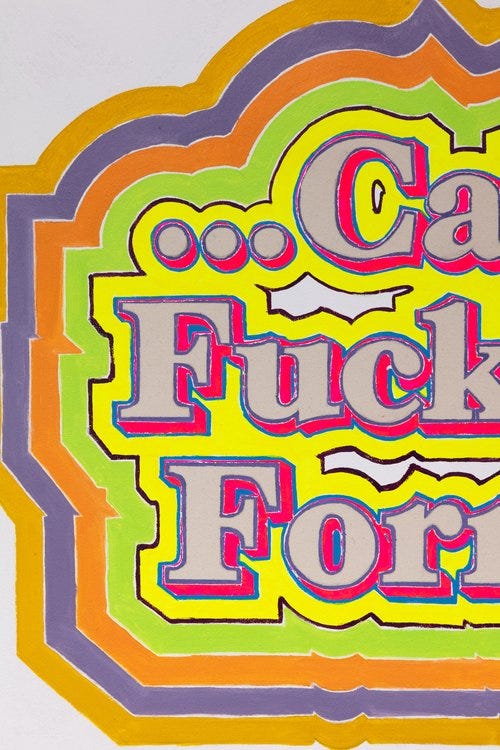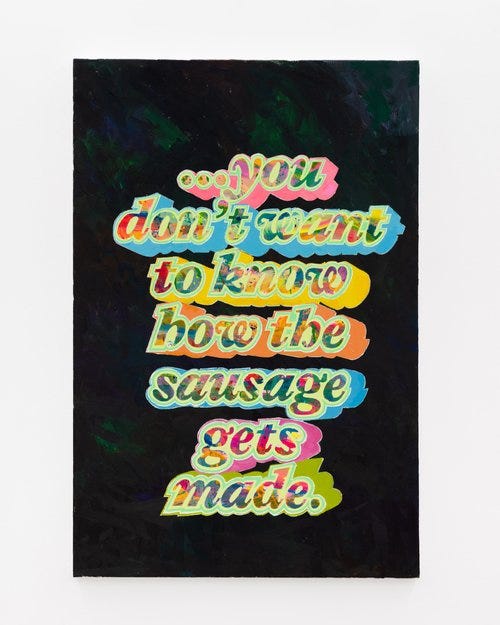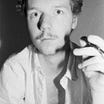Inviting viewers to recline and relax, David Kramer’s California Dreaming Through the Prism of the iPhone at TAP Gallery in Toronto renders a low-stakes art-viewing experience; suggesting that viewers retire from their assumed duty of diligent interpretation and instead take a moment to realize and appreciate the potential of humour in art.
Kramer implores viewers to not overanalyze the work via the cautionary adage: “You don’t want to know how the sausage gets made.” Compounding his erratic use of vibrant colours; incidental glitter constellations; and floating cynical comments, Kramer diverts the attention of the viewer from the embedded personal statement of the work and his practice.
I wonder about the culture of Los Angeles, the culture of the “coastal-elite.” It feels strange to be looking at California as a lime green daybed with vintage-tweed upholstery. The “California Dream” feels misplaced, distant, and disconnected from the ambitions and culture of Toronto’s West End. Surrounding the central landmass are six paintings that employ witty phrases and fast thoughts –lines that I imagine live elsewhere but have since migrated to the canvas. Perhaps these words are the inhibitions of the artist, scribbled notes transposed from their notebook.
What is being hidden from us?
I lean into each work and become more attentive. What is the subtext at play? Looking through the numerous aesthetic traps that Kramer lays out, I extract traces of what look to be graphite impressions of past paintings, or perhaps the foundations for future works. I think about Kramer’s fascination with the perceived comfort that awaits in the “near future,” when his labour is finished.
In chatting with Marx Ruiz-Wilson (organizer of TAP), I am reminded how the necessary sacrifices are made to ensure that the arts community is sufficiently supported and healthy. The topic of work and labour permeates throughout the exhibtion.
I think of those who are willing to financially stretch to ensure that venues are available for work to be shown, dialogues to be started and to encourage community growth. I think about how we make use of artworks. How we employ the works themselves to participate in a sort of labour. We display works and prolong their life/career. Do paintings retire? Or does the labour continue ad nauseam?
Surronded by pithy affirmations, one is bound to start thinking in short bursts of texts.
Liam Mullen is an artist and researcher based in Toronto. His practice stems from routines of walking and holding conversations with others. He is curious about how mediating aural, visual, and written texts can enable deeper engagement the world and art. Currently, he is studying at the University of Toronto's John H. Daniels Faculty of Architecture, Landscape, and Design, entering his final year in the Visual Studies program.


